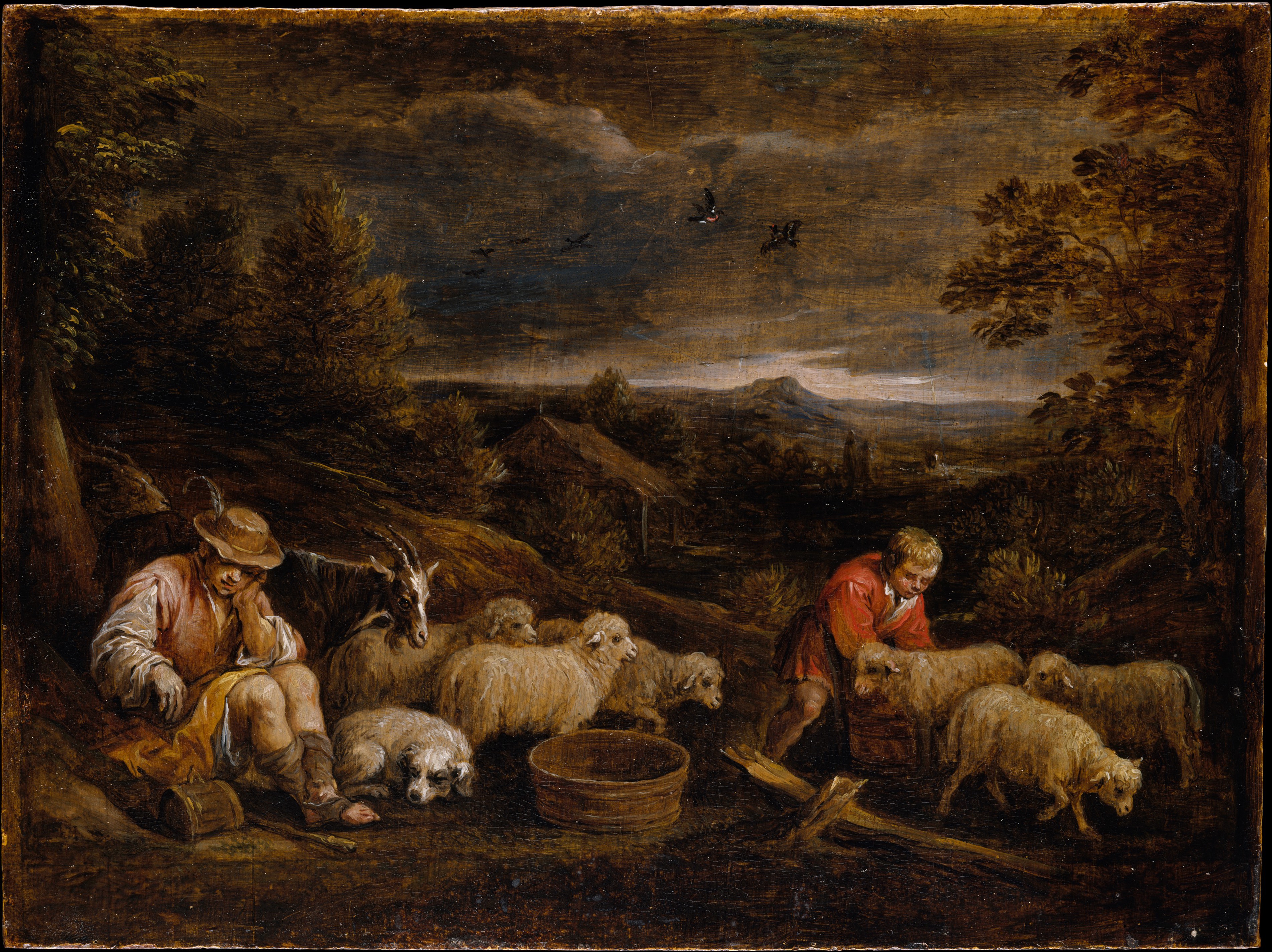
David Teniers the Younger, 1650's
Dogs were important to the Native Americans and European settlers alike.
The Indigenous people had strong relationships to their dogs which have been found in burials in Long Island. See this article by Jeremy Dennis: https://nativelongisland.com/wiki/dog-ceremonialism/ Jeremy notes that many archeological sites show dog remains buried with human remains, on Long Island usually 2 feet underneath the human remains. This may have a relationship to the spiritual significance of dogs in Native American culture.
The Dutch used herding dogs to help manage sheep, and hunting dogs to assist with their hunting and trapping activities. Dogs were seen as working animals that had been trained for centuries to manage cattle.
Dogs and wolves have had a spiritual context for humans in all cultures all over the world, including Ancient Egypt, Rome, Asia, and Europe.
Native American Indian Dogs were likely closely related to wolves, although domesticated, and were feared and sometimes killed by the Dutch and European settlers. They were described as howling like wolves instead of barking like European dogs. (See Henry Fleet, translator and guide for Leonard Calvert) They were both companions and work animals, assisting in hunting and protection. There is no evidence that the Native Americans of the Eastern Woodlands and Long Island used them to pull sleds or other pack devices, but this was very common in much of the MidWest and Canada. Certainly, they provided warmth in a wigwam or longhouse during the very cold winters.
The modern Carolina Dog breed and the modern Native American Indian Dog breeds may have had some relationship to these dogs. Carolina Dogs are smaller, very intelligent, and may have been more common in the area around Maryland, the Carolinas, and the South. Dogs that looked more like a wolf or husky would have been more common in the northern areas, and some Native American settlements may have had both.
The records of New Netherland show some of the problems involved in managing dogs, people, cattle, and culture in the 17th century. Imagine your dismay at finding that your European neighbor is killing the dogs that live with your clan in the longhouse?
Imagine your dismay at finding that your neighbor's dog is killing your goats? - https://encyclopedia.nahc-mapping.org/document/complaint-pieter-van-der-linde-and-others-about-dog-nicolaes-sloper-which-roams-woods-and
Additional reading on dogs:
https://www.vin.com/apputil/content/defaultadv1.aspx?pId=11196&meta=gen…;

